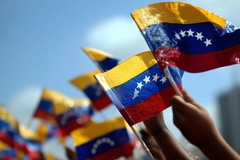
- Industry news
Industry news
- Category news
Category news
- Reports
- Key trends
- Multimedia
- Journal
- Events
- Suppliers
- Home
- Industry news
Industry news
- Category news
Category news
- Reports
- Key trends
- Multimedia
- Events
- Suppliers
EBC's and Caramel Colour

Extrapolation of EBC values for caramel (or malt extracts) can be limited and deceiving unless a reference to which wavelength is being used for measurement as the EBC conversion can be different (per wavelength).

13/04/09 The European Brewing Convention conceived EBC colour units, hence the name EBC. They developed "visual" standards for wort and beer colour. They initiated a "colour" range of 2-27 based on both colour and hue. The low end of the scale was used for the pale, yellow hue beers - lagers and pale ales, while the middle and upper end of the scale moved through the red beers to the brown (darker) stout type beers. They also used a similar range of "visual" standards to measure haze in beer (also considered EBC units). These were standards made from formazin to detect the haze.
As technology developed in the brewing industry, many organizations adopted a colour method based on the old EBC visual standards. The IoB (Institute of Brewing) extrapolated the EBC scale for malt and adopted a method for measuring wort and beer photometrically at 530nm. The ASBC (American Society of Brewing Chemists) developed a photometric method at 430nm. For reference, the ASBC method is defined as 12.7 x absorbance at 430nm in a 1 cm cell, and EBC=2.65xASBC - 1.2.
Extrapolation of EBC values for caramel (or malt extracts) can be limited and deceiving unless a reference to which wavelength is being used for measurement as the EBC conversion can be different (per wavelength). EBC is a comparison to a known standard and not as accurate as a spectrophotometer. Caramel colour manufacturers translate to EBC's with a conversion factor, at a known wavelength. The four different classes of caramel colour each have a different conversion factor.









